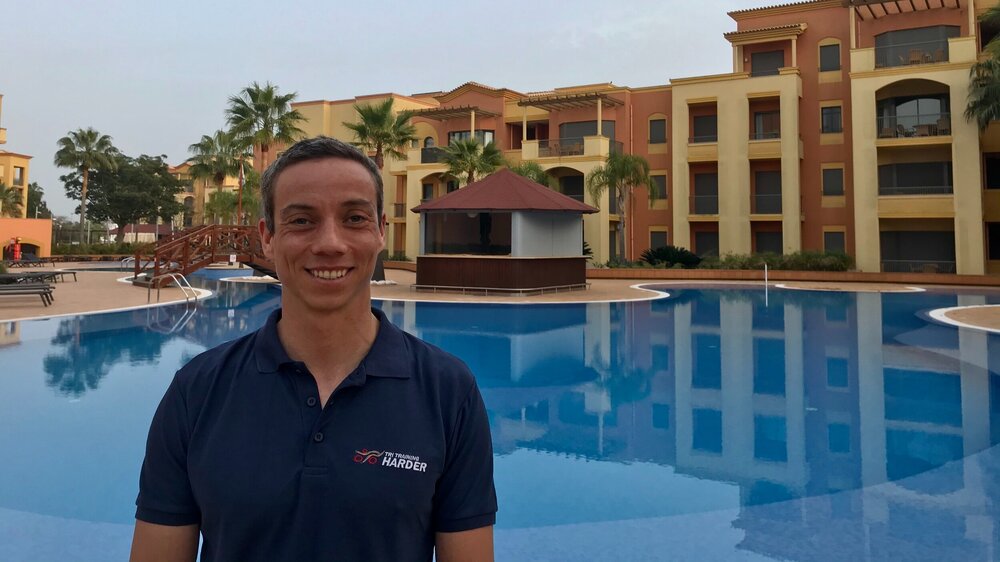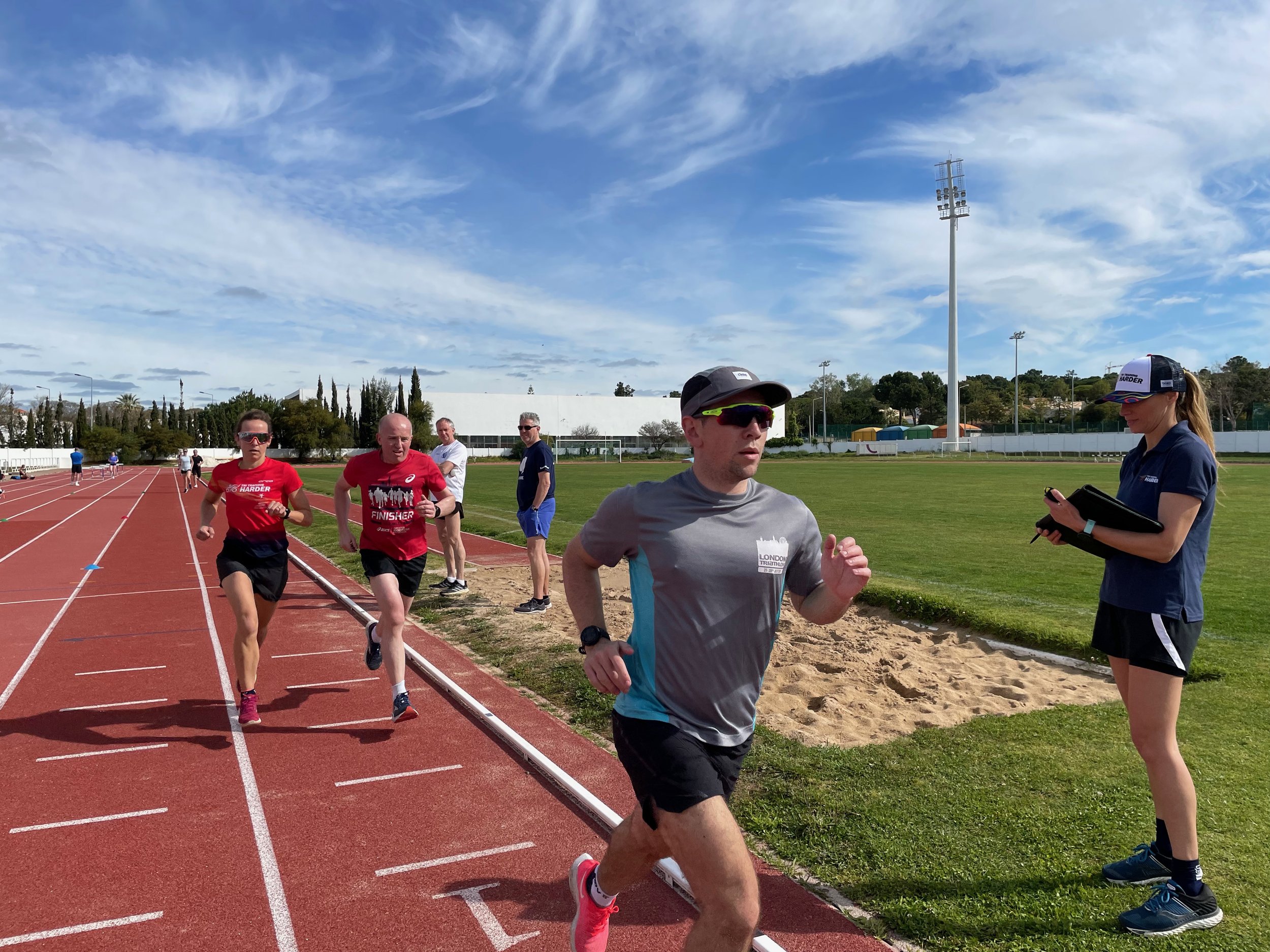Will Carbon shoes make me run faster?
Carbon-plated running shoes offer several genuine benefits and have the potential to help many runners of varying standards achieve their goals, not just fast and elite runners. Are these super shoes for you? Coach Jon aims to find out.
As we have seen in my previous blog, carbon shoes, especially Nike, improve running performance in elite runners via improved running economy. The original study into the prototype Nike shoes concluded that the new shoes improved running economy by an average of 4%. This study tested athletes at speeds of 14–18 km/h. That’s a 2:20-3:00 marathon pace. A 4% improvement in running economy - equates to a 3.4% increase in running velocity at these speeds. But what does this mean for slower runners?
The relationship between running economy and running velocity is not linear. In theory, a 4% improvement in running economy should elicit a bigger improvement in running velocity for a slower runner as they will have less air resistance to overcome at the slower speed. All of the major studies into carbon shoes have been performed on a treadmill, therefore overcoming air resistance is not a factor. This spreadsheet aims to estimate the Nike Vaporfly 4% time savings for an athlete over different race distances. The theory is nice but that is under the assumption that the actual shoe improves running economy to the same extent in slower runners.
Studies that have assessed the effects of carbon-plated shoes on running economy have found significant variances in how they change performance between runners. Some runners, known as ‘high responders’ may find that carbon-plated shoes make them faster, whereas others may notice no improvements at all. It all depends on the biomechanics of the runner and how they interact with the shoe.
This study with 16 ‘trained runners’ shows that the Nike Vaporfly Next% improved running economy at slower running speeds but at a lower percentage than the original study.
Like all the studies we’ve looked at, this study uses ‘trained runners’ that are potentially not running at their normal, comfortable, marathon pace. There appears to be no research using slower athletes where running at 10 kph is more likely to be their race pace. These athletes being trained runners also means they probably have very good running form. This brings us to the next point.
Do the super shoes work with poor running form?
These super shoes are designed around the running form of the best athletes in the world. Elite athletes can gain the biggest energy return from the shoes as they can generate a strong foot strike and have the mechanics which enable leg stiffness (and therefore springiness) which can be used to maximise the effects of the carbon shoe.
There doesn’t seem to be any research using amateur athletes with questionable running form. The geometry of these shoes is designed around a mid-foot to a forefoot runner. A very soft and narrow heel base offers little in the way of stability for a heel striker. Will that carbon plate work as well if you over-stride or heel strike? Probably not. Is there still something to be gained by wearing the best, lightest shoes even if your running form doesn’t match that of their intended wearer (Eliud Kipchoge), quite possibly!
In absolute terms, the trainers will still make a big difference in terms of time-saved for a slower runner. Considering the above studies, even if we take a conservative 1% increase in running velocity a 5-hour marathon runner could potentially take nearly 3 minutes off their marathon time with a pair of top carbon shoes, equaling the amount of time an elite runner would gain by being able to get the full 4% gains out of the shoes.
The price, of course, is a contentious issue. If you're a slower runner, is it still worth forking out over £200 for a marginal 1% saving? Maybe. Is it fair if you can’t afford the super shoes that everyone else seems to be wearing? No. Some runners may feel they are not ‘good enough’ to wear an expensive pair of shoes, even if they can afford them. If you want to feel good in a pair of shoes and you feel they will benefit you, go for it.
The hefty price tag also brings about more worries for athletes, as the rumour is they lose all their benefits after one marathon outing. Again, labratrundown has done some great testing and figures the Alphafly have almost the same running economy benefits after 400 km of running, enough time to bed the shoes in nicely before racing a couple of marathons.
What about the course? What if I’ve entered a hilly marathon?
Interestingly this study showed that the Vaporfly 4% shoes still improved running economy on uphill and downhill grades on a treadmill but the biggest improvements were seen on level grades. Showing that these shoes can still help you run faster even on a hillier course, but the biggest benefit will be on a flat course. Most of these shoes are designed around road running and breaking the marathon world record. However, carbon shoes are breaking records off-road too. Jim Walmsley broke the 50-mile world record in HOKA’s Carbon X shoes.
Which carbon-shoes are for me?
As we saw in my previous blog, lab tests show carbon shoes have a wide range of running economy improvements between brands. On a treadmill, the Nike carbon shoes remain the top performance booster. However, these tests are not performed in real-world conditions: have you ever tried to run around a dead turn in a pair of Vaporfly shoes? Apparently, it feels like wearing a pair of stilettos! Different carbon shoes have different levels of stability. Slower shoes on the treadmill may actually be faster over a technical triathlon run course. Interestingly, the occurrence of Nike carbon shoes appears to be dwindling with many athletes choosing the shoe that matches their running form or racing style. Most recently Gustav Iden broke the Ironman World Championship run course in a pair of On - Cloudboom Echo 3 shoes.
Currently, aside from performing real-world testing with multiple pairs of carbon shoes, there doesn’t seem to be a clearly defined way of picking the fastest shoe for you.
Should I buy a pair for my next race?
If you are not hitting the basics: following a well-structured training plan and looking after yourself with suitable nutrition, sleep and hydration, then prioritising the latter will take far more off your running times than a new pair of shoes. If you want an expensive marginal gain, it may be worth it for you. Even if the shoes have little or no positive effect on your running speed, they will probably feel faster, that psychological boost alone may be worth the price tag.
This advice comes with a big health warning. These shoes are very different; they take a lot of getting used to and your body needs time to adapt to the unique nature of these shoes. Bring them into your shoe rotation gradually. Rushing this process can lead to unwanted issues in your feet, ankles, and calves. It goes without saying, carbon shoes shouldn’t become your everyday training shoe. Not only does the hefty price tag warrant saving them for your toughest sessions and races, but training too much in a pair of carbon shoes can lead to a degradation in the musculature in the foot and ankle as the stiffness in the carbon plate takes over some of the work of these muscles. We advise using a non-carbon-plated shoe for your easier training sessions.
Have you raced in a pair of carbon shoes, how did they work out for you? Let us know in the comments below.

Jon has been coaching with his local triathlon club in Hertfordshire around his full-time job as an airline pilot for several years. Unfortunately, Jon lost his pilot’s licence for 11 months in 2019 due to being diagnosed with testicular cancer (read his story here). He used the time off from flying to complete his Level 2 and Level 2 BTF diploma qualifications as well as a L3 Personal Trainer qualification. With his new coaching qualifications under his belt, Jon was able to join Tri Training Harder as a coach in 2019. He has now recovered from cancer, started flying again and is training hard for the coming triathlon season.
Jon has a flexible approach to coaching and training, from his own busy lifestyle he knows how to balance training around family, friends and social commitments. Jon loves to utilise the knowledge gained on his Personal Trainer course and finds incorporating well-structured strength and conditioning sessions vital to triathlon performance.
Visit Jon's
Coach profile
We’re here to help
Tri Training Harder are one of the leading Triathlon coaching providers in the UK, using our wealth of experience to unite scientific and technological research with already well-established and successful best practices, to create a formula for triathlon and endurance coaching that works.
The result is an honest, dynamic, yet simple new way of constructing an athlete’s training to allow them to reach their potential.
If you’re planning your next season, just starting out in the sport or are looking for extra guidance at the very top end of the field, we are here to help, and our coaches would be delighted to hear from you. You can contact us via the website, and one of the team will be in touch.


